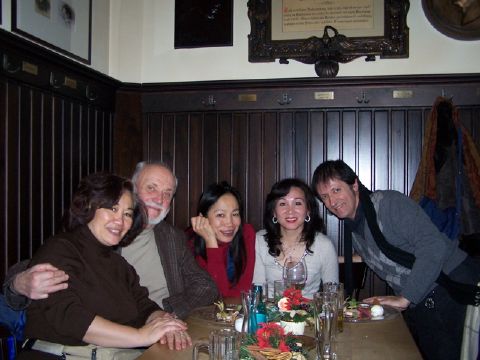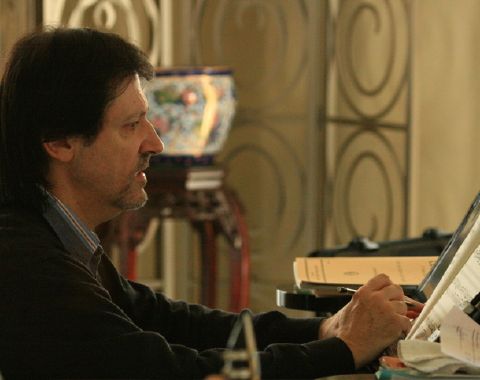|
<<< << -- 3 -- Jennifer I Paull RUI DOS REIS -- >> >>>

I was left wondering how he had managed to pull off the mixing of fugue (organ), chanting (choir), geographical diversity (didgeridoo and fujara), past (Greek and Latin) and present (some rather 'cool' moments on drums and vocal gymnastics) and sculpt such a resonant fingerprint. His style is his own and very recognisable. The soprano soloist, Hiroko Kawamichi, is excellent, giving herself passionately to the emotions of both works. I spoke to a member of the Lausanne University Choir who told me that everybody was smitten by both works: their diversity, the challenge they represented and the excitement they conveyed. It's very difficult to rehearse spoken text in which, through the absence of a melodic line, it is rhythm alone that cements the parts. Rehearsing this without melodic support is not evident. The percussion ensemble was obviously only present for the final rehearsals (the existentialistic intrinsic burden). For once during this filmed, live performance each participant looked happy. Everybody was enjoying h{er|im}self, and that really shows in the DVD.

With the Masurs in 2005
|
I first met Rui dos Reis in the 1980s because of one note. I was listening to a good but somewhat tepid version of the opera Il re pastore (by a young Mozart) in a very modern theatre which, from the outside, resembles a giant corrugated metal can of peas. Some bright spark had already conceived the graffiti idea and sprayed the Swiss brand name 'Hero' on its metallic skyward-pointing exterior (which had been speedily 'grey-ed out'): the Théâtre du Crochetan, Monthey, Switzerland.

Rui dos Reis. Photo © Joy Chou
|
One or two soloists were excellent (Ellen Schuring springs to mind), but there was much non-fizz about. I truly love this opera, probably because my first encounter with it (and a very young, sparkling Jill Gomez) was quite magical. This had taken place in John Calder's Ledlanet Nights Festival; Ledlanet being a Scottish mini-castle in which much tends so to be. Inevitably my memory went back to more passion and less -- blandness. A boring recitative had me counting the desks of violins -- the way one does. Suddenly, the harpsichordist added a seventh to its final perfect cadence. A dominant seventh in a Mozart recitative? Had I been playing the harpsichord at that moment, I may well have been guilty of the same St Trinianesque gesture.
I had done far worse. A totally frustrated student at the Royal College of Music sitting in an orchestral wind section (in which every instrumental line had at least two players at the same desk), I became very irritated during The Sorcerer's Apprentice (Paul Dukas 1865-1935). The pages of frenzied notes made one deaf when there was one player per part. Everybody wanted to be heard! Sir Adrian Boult insisted on the doubling. I played the National Anthem throughout and not even my neighbour could hear me. 'QED', thought I with youthful arrogance. On one occasion he did throw out a member of the strings for 'answering back', when the poor soul had simply tried to explain something relevant to bow markings. Luckily, Sir Adrian didn't catch me. So, Rui's single note was a gesture I understood. It was just pure coincidence that I happened to be sitting in that provincial Swiss theatre and knew what he meant by it. In terms of fireworks, it was a Sydney Harbour Bridge moment I very much appreciated. I made a point of finding the continuo player with the twinkle in his eye. It was Rui.
Continue >>
Copyright © 13 January 2008
Jennifer I Paull, Vouvry, Switzerland

|

